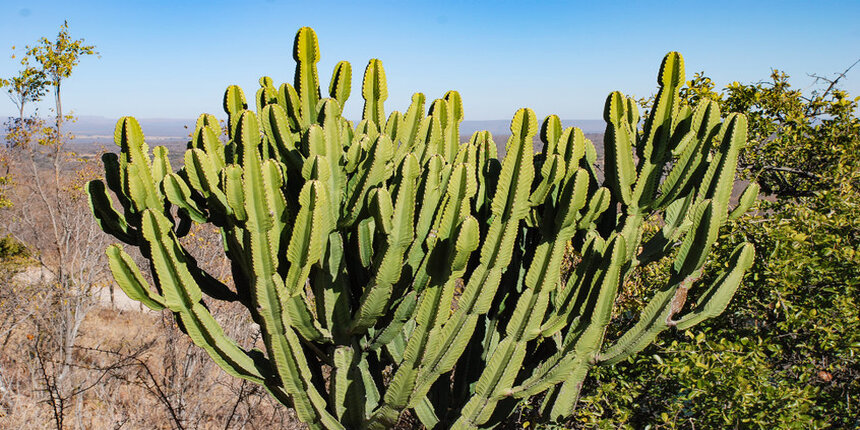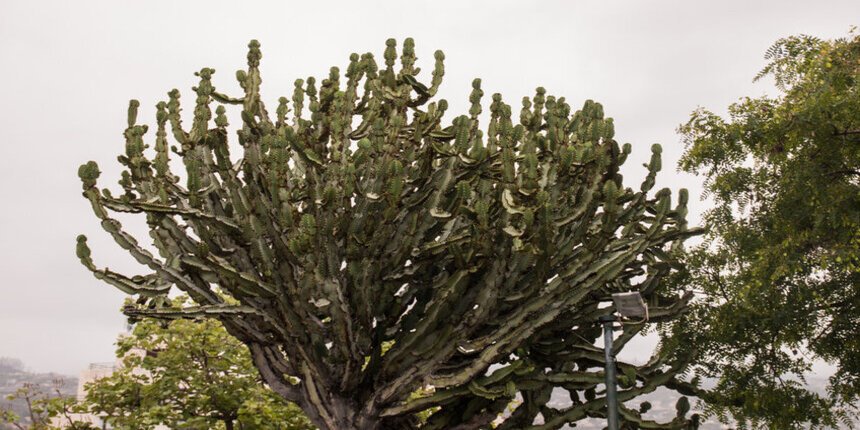- Kitchens
- Design Ideas
- Cities
- Trends
- Guides
- Price Calculators
- Our PortfolioNEW
- More
- Home
- Trends
- Furniture And Decor
- Indoor Plants
- Euphorbia Ingens Plant Indp
How to Care for Euphorbia Ingens Plant - A Guide Euphorbia Ingens
How about edging your garden area with a different succulent, Euphorbia ingens? It is only going to breathe your collection to appear grandiose to the beholder. All you have to do is understand the workings that join hands in performing the best care for this plant and which is why we have come up with this section. Let us roll down to it explaining the care guide for the Euphorbia ingens plant.
Table of Content
Euphorbia ingens that is popularly known as the Candelabra tree is a member of the spurge family, Euphorbiaceae family and genus Euphorbia. The plant is native to South Africa and nestles across the dry regions of Southern Africa, Zimbabwe, Zambia, Angola, Malawi, Botswana, Mozambique, and Swaziland.
This succulent plant develops into a tree featuring a short and thick trunk along with grey bark, growing up to 12 meters. If you ensure the care regime for the Euphorbia Candelabra tree, you will witness its growth by 15 meters of height which is, not to hide, a rare phenomenon.
What type of care?
Let us get started on that.
How to Care for Euphorbia Ingens Plant
The framework for keeping and caring for the Euphorbia plant or any plant is directed by different parameters, from a compatible temperature to prevention from insects and diseases. You must be well-equipped with the knowledge that is required to have healthy and ever-smiling Ingens at around.
One by one, we will take on different aspects of the care guide for the Euphorbia Ingens plant. Head on.
-
The Water and Feeding Regime
Euphorbia Ingens, the natural habitat, can go with barren atmosphere. It won't mind living in droughts and cruising through deserted surroundings. Do not go over the ounces when watering this plant. It is recommended to keep its water rituals once or twice a week. You can go low on the quantity, watering the plant once a month when the temperature falls during the second half of the year.

If we look at the Euphorbia plant care from the fertilization vantage view, the idea remains stagnant- do not overdo it. These plants won't fret at you if you go without feeding them frequently. They rather only require feeding in the times of spring when they begin with new growth. Use 10-10-10 NPK diluted liquid formulation to feed these plants.
-
The Soil In and About
This plant finds contentment through well-drained dry soil. You can do a mix-up of one part of loam soil, one part peat moss and two parts coarse along with a nominal amount of gravel to enliven drainage. When it comes to the time for transplantation, the spring and initial summer days make the best calling to do the job.
-
Grooming and Maintenance
Euphorbia Ingens Cactus are composed of stern nature and do not demand a big amount of love and affection in order to thrive and bloom. In fact, extra Euphorbia Ingens cactus care can cease to exist with overpampering. These plants are super good on their own, so you can simply do your part by avoiding excessive watering and checking if the soil is soggy.
-
Sunlight and Temperature
If you want to accelerate Euphorbia Ingens growth rate, show your love in the language of sunlight and lots of warmth. Ingens love the sun and warm environment and grow well in dry areas. They do not despise the sun and can go on with droughts. So if you want to make sure it is happy under your keeping, then let it have enough of the sun's charm.
You should keep this plant in an environment that is constantly warm. The right temperature for it ranges between 74° and 82° degrees Fahrenheit. Also, note that this plant turns gloomy in the days of winter. The lowest temperature it can tolerate is 28° degrees Fahrenheit. The best you can do for winter care for Candelabra trees is simply to let them live in a sunny spot.
-
Flowering and Fragrance
It is an exuberant feeling to watch the plant grow into flowers and color your surroundings. To make sure you take part in this vista, you need to take care of your Euphorbia ingens well. The Euphorbia Ingens flower happily blooms in the season of autumn and continues its feast throughout winter.
How do they turn out to be when they bloom? The Euphorbia flowers appear in yellow blooms with greenish hues on the top spot of the plant. The flowers cover the ridged section of the succulent. You will get to find a party of flowers expanding on this plant.
Know that the Candelabra tree flowers are welcoming to a range of insects with bees and butterflies. They also become food for many birds to relish in and some birds find a home in these flowers to snuggle their tiredness away. However, there is nothing distinctive to find when it comes to the Euphorbia Ingens fragrance.
How To Propagate Candelabra Tree Euphorbia
It may not be simple to propagate Euphorbia Ingens with seeds. In fact, finding the seeds can be extremely a job of hand-wringing and then comes the germination which, again, is a call for a tough battle. It leaves you with the option for the propagation of Candelabra is through cuttings.
Follow the below-mentioned instructions to propagate Euphorbia Ingens-
- First things first, put on your gloves to head to the plants. Since this plant is toxic, you can cover your hands to prevent any kind of irritation.
- Take a sharp knife and collect the cuttings from about the branching point of the plant.
- Now bring it to the cold running water and wipe off the milk-like latex.
- Let the cuttings dry for a couple of weeks.
You will now spot a callus resting over the cut ends which you have to plant in the best-suited soil. Yes. That's it. You can now wait and watch your Euphorbia sprint into a jewel-like tree.
Euphorbia Tree Problems and Pests
Everything goes undone if you don't pay attention of the Candelabra tree problems and the pests it is potentially vulnerable to. Well, we'd love to tell you that Euphorbia does not let any pest come near, leading to calm-headed handling for you. The reason that this plant is toxic in nature is what makes the pests not even have it in their brains to pass by it.
But the sad part is – this plant is toxic.
As you have your garden all decked up for the welcome party for this beautiful Euphorbia plant, you should also be informed of its not-good side. The Candelabra tree is a poisonous one and can sum up in health-threatening consequences if its latex is ingested.

The toxicity constituted in Euphorbia Ingens can lead to skin irritation and also make a person blind. You can make sure that this tree does not reach out to your children, pets and anyone by placing it in a place that is not accessible.
In the middle of this toxicity, the sound shade to this tree is that it does not harm plants in any expression.
Use of Euphorbia Ingens Cactus
No matter the toxicity they are known to have inside them, the Euphorbia Ingens plants have been giving a hand to medical treatments for ages. The branches of the Euphorbia Ingens Candelabra tree are treated as fish poison in Zimbabwe and South Africa. Since you would not want to have it to cure your medical issues or feed poison to fish, you can rock it to the volume of good looks in your garden or make the Euphorbia Ingens houseplants ornament your indoors. Just a gentle reminder- keep it out of the reach of your children and pets, wherever you keep it.
Ready for a home transformation?
Let our designers assist you!
Recent Posts
Related Category
- Balcony
- Bedroom
- Home Decor
- Living Room
- Outdoors



































